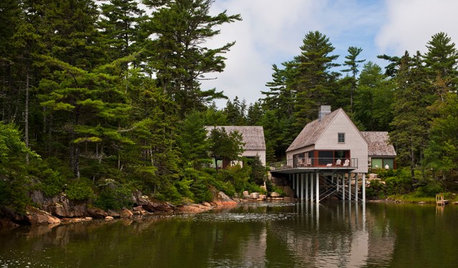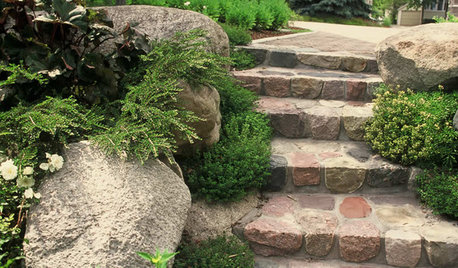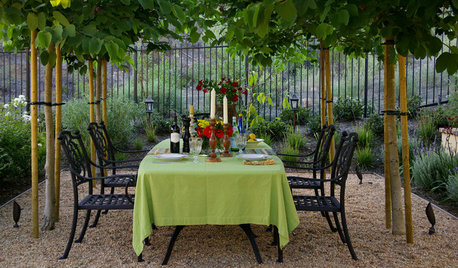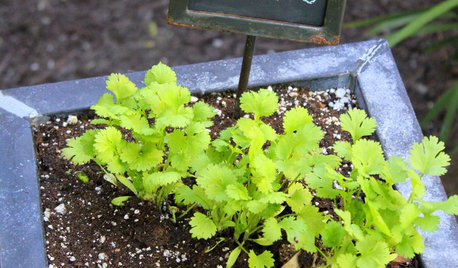extremely root-bound! transplant to gritty mix
stropharia
13 years ago
Related Stories

MODERN ARCHITECTURERoots of Style: International Style Celebrates Pure Form
Using technology and materials of the time, International style is always current. See its expression in these 16 homes around the world
Full Story
FARM YOUR YARDHow to Grow Vegetables in Containers
Get glorious vegetables and fruits on your patio with a pro’s guidance — including his personal recipe for potting mix
Full Story
FALL GARDENINGMake This Fall’s Garden the Best Ever
Learn the most important tip for preventing buyer’s remorse, plus get more valuable buying and planting advice
Full Story
LIFEHow Your Landscaping Can Keep Burglars Away
Prevent home break-ins with strategic landscaping and good practices instead of menacing — and maybe less effective — measures
Full Story
ARCHITECTUREIt Takes a Village: 2 Homes Made of Multiple Structures
Separate buildings join in style and intention in these home bases, showing that sometimes more is just right
Full Story
EDIBLE GARDENSHerb Garden Essentials: How to Grow Thyme
Common thyme and its flavorful cousins are anything but ordinary in the garden
Full Story
LANDSCAPE DESIGNEnjoy the Romance of Dining in a Classic Gravel Garden
Here’s what to consider when it comes to installing, styling and maintaining a DIY-friendly gravel patio
Full Story
HOUZZ TOURSMy Houzz: Scandinavian Simplicity in a Pennsylvania Colonial
Patiently peeling away old layers and adding fresh design elements leads to a bright new look for an outdated home
Full Story
ARCHITECTUREModern or Contemporary Architecture? The Interiors Edition
See how one expert distinguishes between two popular camps of interior architecture. Do you agree with his choices?
Full Story
GARDENING GUIDESHerb Garden Essentials: Versatile Cilantro Adds Flavor to Herb Gardens
Love it or hate it, this cool-season herb contributes its unique flavor to any number or the world’s cuisines
Full StoryMore Discussions








tapla (mid-Michigan, USDA z5b-6a)
jodik_gw
Related Professionals
Brentwood Landscape Architects & Landscape Designers · Parole Landscape Architects & Landscape Designers · Vernon Hills Landscape Architects & Landscape Designers · Commack Landscape Contractors · Dinuba Landscape Contractors · Riverhead Landscape Contractors · Teaneck Landscape Contractors · Chicago Ridge Landscape Contractors · Paradise Solar Energy Systems · Paramus Solar Energy Systems · Mableton Window Contractors · Miami Springs Window Contractors · Surfside Window Contractors · White Center Window Contractors · Holbrook Fence Contractorscalistoga_al ca 15 usda 9
strophariaOriginal Author
tapla (mid-Michigan, USDA z5b-6a)
ykerzner
jodik_gw
jojosplants
meyermike_1micha
tapla (mid-Michigan, USDA z5b-6a)
jodik_gw
tapla (mid-Michigan, USDA z5b-6a)